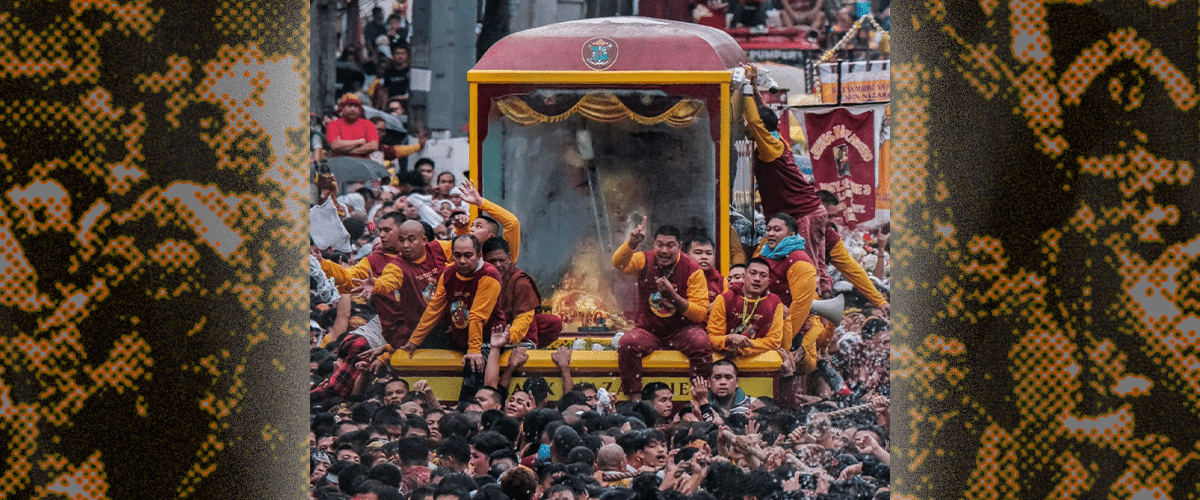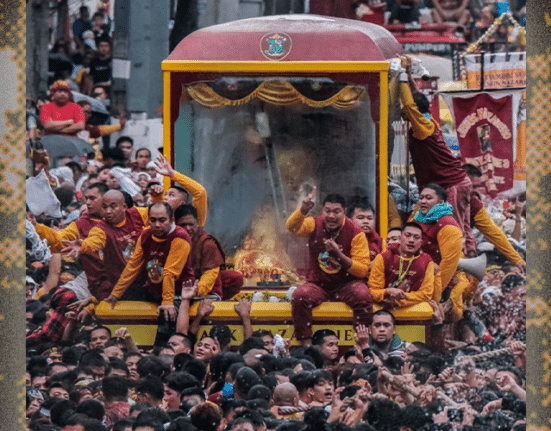AFTER three years, the traditional Traslacion returned to its usual procession with millions of Catholic devotees joining and taking the streets for the long procession of the image of the Black Nazarene.
The Traslacion returned on Tuesday, January 9, after it was suspended in 2021 due to the COVID-19 pandemic. Mass gatherings were prohibited at the height of the pandemic to prevent further spread of the virus.
According to the Quaipo Church Command Post, a total of 6,532,501 devotees joined the religious procession from 5 a.m. to 6 p.m.
The procession moved at a faster pace this year as it lasted only for 14 hours and 59 minutes, surpassing the 16-hour record in 2020.
The andas, or the carriage bearing the Black Nazarene image, began moving from the Quirino Grandstand at 4:45 a.m. and reached the Quiapo Church at 7:44 p.m.
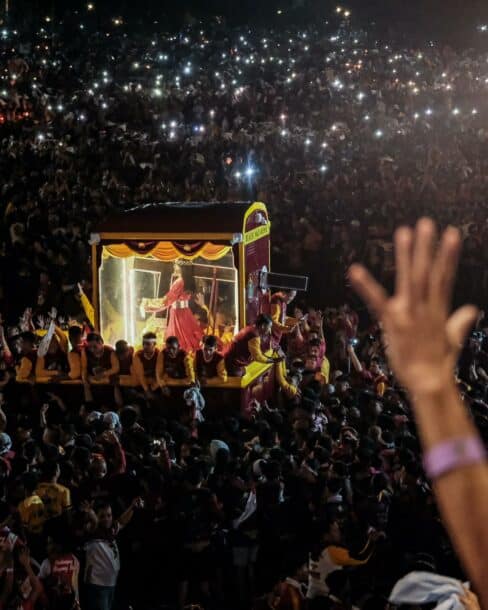
Loud cheers and noises welcomed the Black Nazarene image when it arrived at the Quiapo Church, signaling the end of the Traslacion.
Reported injuries
The Philippine National Police reported that this year’s Feast of the Black Nazarene was “generally peaceful.” However, hundreds of devotees were injured during the parade.
In a gathering of more than 6.5 million believers, the Philippine Red Cross reported 706 people receiving medical assistance.
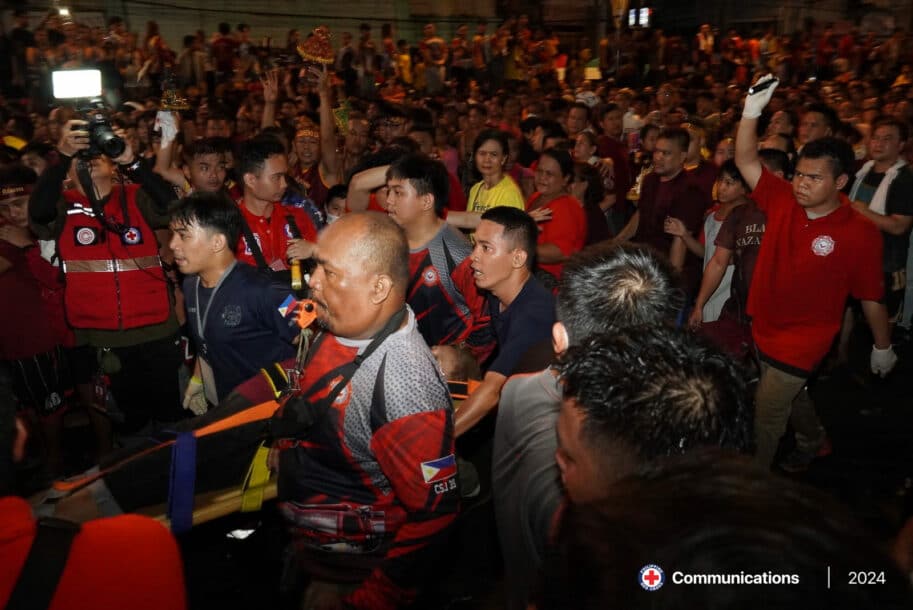
This evaluation was made at 8 p.m., when the Black Nazarene arrived at the Quiapo Church before 8 p.m., marking the end of the long-awaited return of the religious feast.
According to the injury assessment, 257 people had their vital signs checked; 215 received minor injuries, while six sustained major injuries.
A total of 34 people were also transported to their respective Emergency Field Hospitals (EFHs) and other local hospitals. Meanwhile, nine devotees received welfare aid, while 185 respondents received PRC Hot Meals.
Fortunately, despite the large number of attendees, the recorded injuries were lower than predicted. This must also be attributed to the quick action of medical officials.
Devotees climbed the andas
Officials from Quiapo Church reminded the devotees that climbing the carriage of the Black Nazarene image would be prohibited.
It was difficult to climb the new andas used for this year’s Traslacion as the holy figure was encased in glass and only the tail of its cross was exposed. The image was surrounded by members of the Hijos del Nazareno to secure it from the crowd.
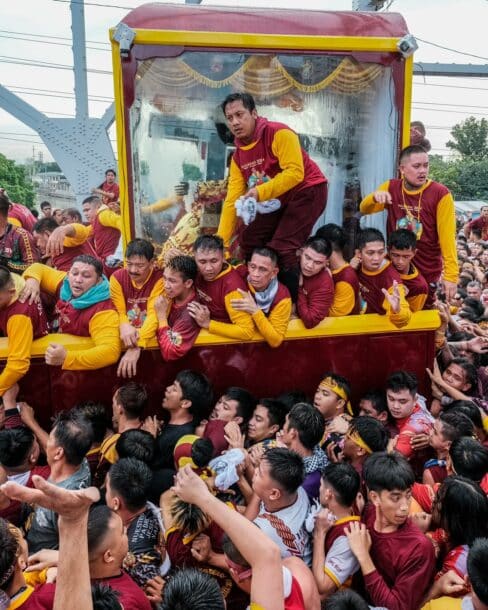
Despite this, many devotees still took the risk to go up the andas to get closer to the image. Several of them even tried to hang on to the exposed tail of the cross.
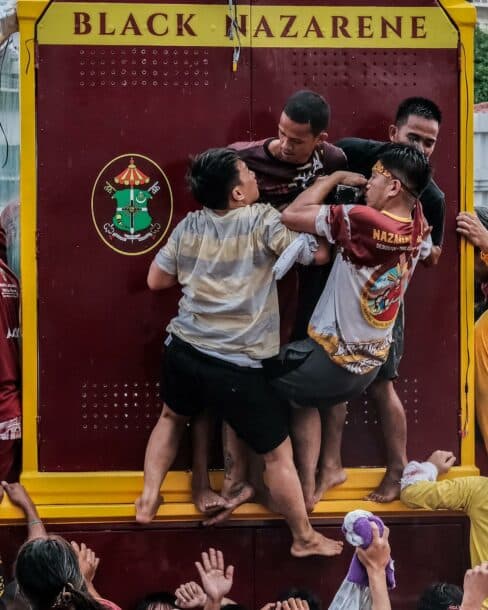
Some devotees could be heard asking them to go down the carriage as they were already blocking the view of the Black Nazarene image.
Authorities also said that the andas was being slowed down as many individuals attempted to climb the carriage in the hopes of touching the holy figure.
Devotees wipe parts of the Black Nazarene image with hand towels or handkerchiefs as they believe that it will bring miracles to their lives.
Youth Power
Among the notable things that was seen in the Traslacion was the attendance of more young devotees.
Many said they have taken the tradition from their parents and are continuing it.
However, some youths were seen on television climbing up the rear of the andas, endangering the exposed part of the cross.
They were moved away by the devotees themselves as it was banned for them to go up.
Andas rope broke off
One of the two ropes used to maneuver the andas broke off before the carriage turned to Arlegui Street and Quezon Boulevard.
The Quiapo Church clarified that two ropes were still being used to pull the andas and only the left portion of the rope became shorter.
The snapped rope was brought back to the Quiapo Church at around 1 p.m., with some devotees still holding on to it.
Aside from the image, devotees also believe that they would be blessed once they touch the rope of the andas.
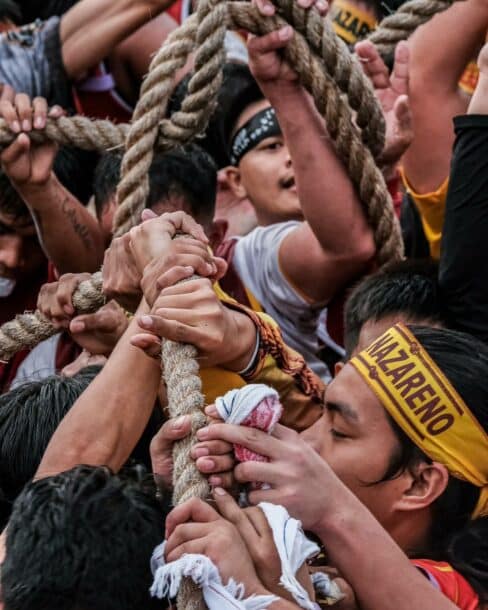
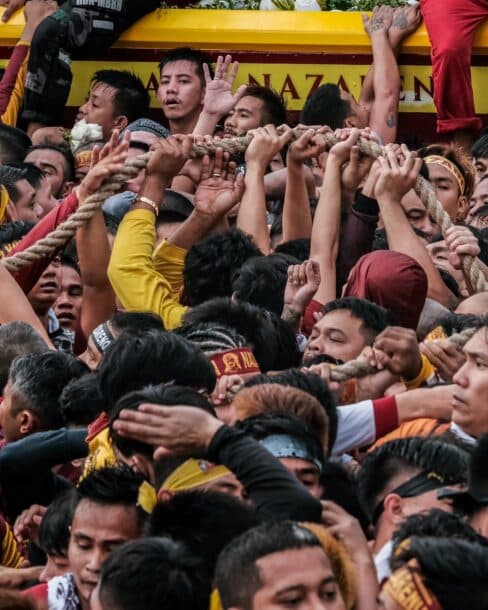
Several devotees even collected strands of the rope of the andas after it snapped.
‘Dungaw’ returns
Ten hours into the procession, the Black Nazarene finally meets the image of Our Lady of Mt. Carmel de San Sebastian at Plaza del Carmen, in front of the Minor Basilica of San Sebastian.
The well-known ritual of “Dungaw” elicited thundering cheers of “Viva” from the faithful at precisely 2:52 p.m.
The aforementioned activity represented religious etiquette between the King and Queen of Quiapo, who gathered magnificently to guide the devout through prayer.
This year’s “dungaw” was the procession’s solitary stop and the eighth since its resurrection in the 2014 Traslacion.
Following that, the devotees engaged in a five-minute prayer and singing of “Our Father,” causing the procession to pause for a few minutes before continuing to the end of the procession.

